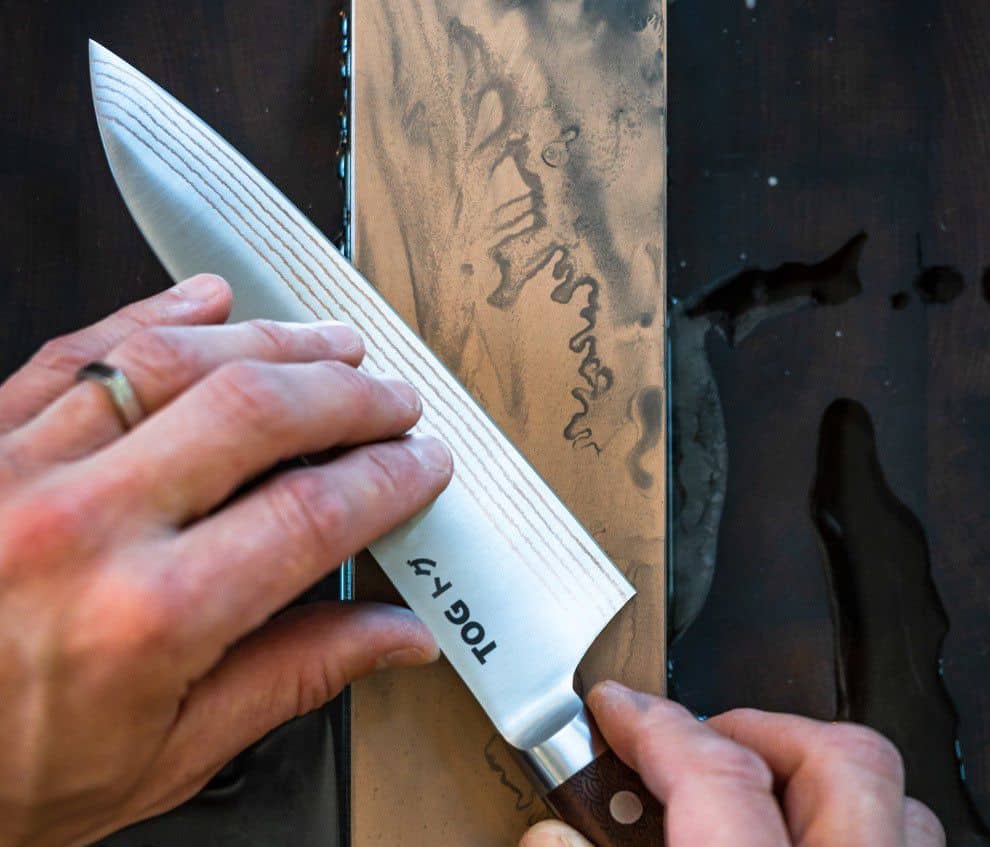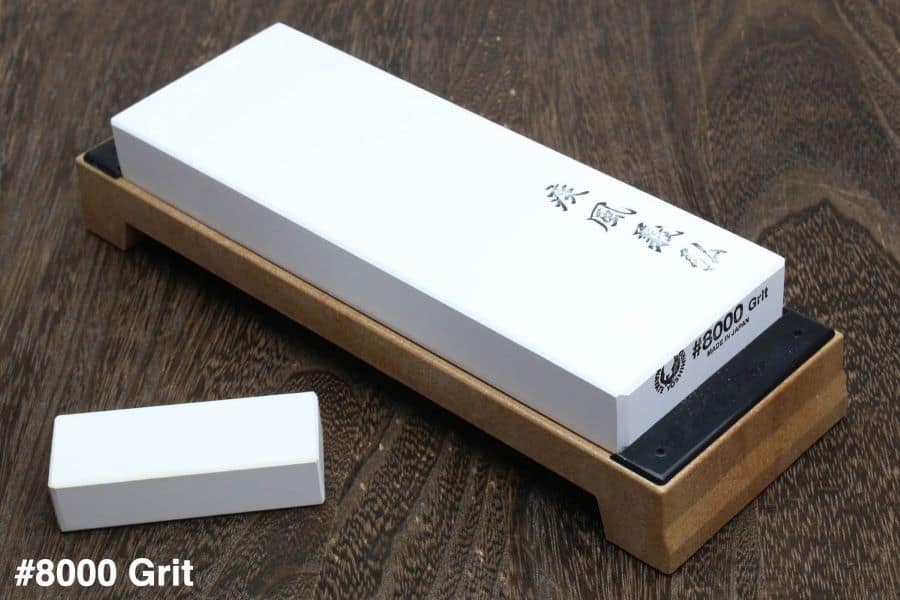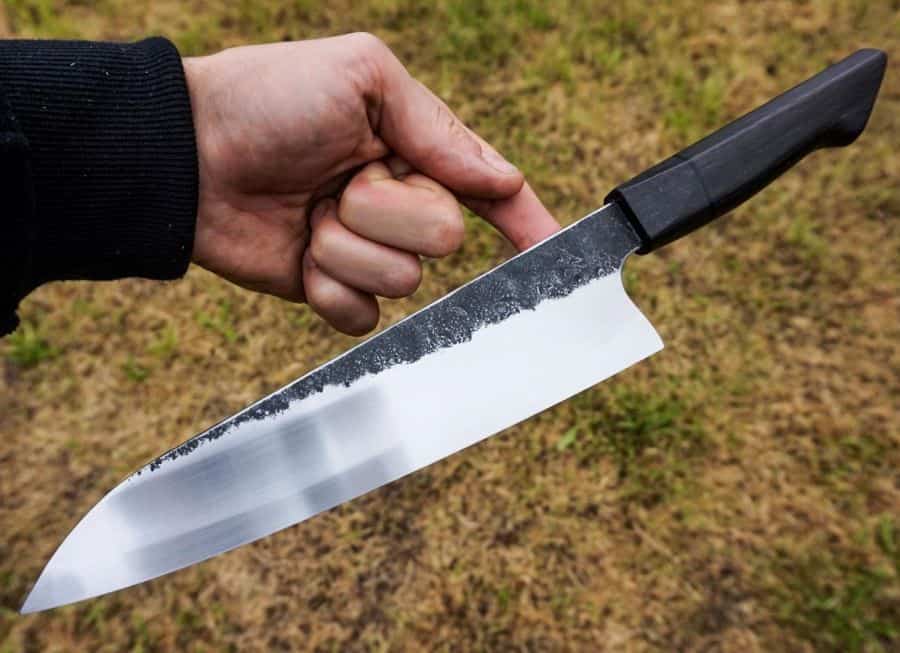Japan
How to Sharpen a Japanese Gyuto Knife?
The Gyuto knife originates from Japan as the name implies and it’s similar to the Western classic Chef’s knife. This knife is truly multipurpose, it performs an extensive range of functions, it can be used for different chef cutting techniques and it works well to cut a lot of fruits, vegetables, fishes, and meats.
Just like every other knife, this knife needs to be sharpened from time to time to maintain its sharpness and durability. One of the methods the Japanese traditionally sharpen the knives with is the use of whetstone. You can sharpen a Japanese Gyuto knife using a whetstone. Below are step by step processes that you can follow to learn how to sharpen your Gyuto knife.

You may also want to read:
Step 1. Prepare for Sharpening
Keep the whetstone inside water for between 5 and 10 minutes. Do this to take air away from the whetstone. When it’s inside water you’ll see a lot of bubbles coming out from it. When the bubbles are no more coming out, your whetstone is ready for use.
Make sure your table has a good balance and a good height suitable for sharpening. It is also good that you place a towel on the table. The towel will keep your stone from slipping.
You should inspect the condition of the edge of the gyuto knife before you start sharpening it. For knives that haven’t been sharpened in a long while, use an Arato. But for those you sharpen frequently, use Nakato. Arato, and Natkato are types of whetstones
Step 2. Sharpening the blade
Place the edge point of your knife on the whetstone, use your fingers to push and press the point you’ve selected to sharpen. As you keep the angle and use your fingers to push the point, stroke the knife blade till it gets to another edge of your whetstone. Then you pull the knife blade back till it gets to the edge of your whetstone.
This forth and back is regarded as just one stroke. Do this again for like five strokes till you can feel or see some little burrs also known as edge curvatures. Then place your fingers on where you haven’t sharpened yet, repeat the five strokes you did earlier, and base to the tip of the knife’s blade.
Step 3. Sharpen the opposite side of the blade

The next step is to sharpen the opposite side of the knife’s blade. Place the blade on the whetstone. As you use your fingers to push the blade, stroke it till it gets to another edge of your whetstone, then pull it back till it gets to the edge of your whetstone.
This process of sharpening removes the burr that is in the knife’s edge after sharpening the first side of the blade. Repeat this process from the base to the tip.
There are basically three types of Japanese whetstones namely; Arato for rough grits, the Nakato for medium grits, and the Shiageto for fine grit. Nakato is normally used for sharpening, but you can use Arato at first to correct damaged or rough edges. Then use Nakato. After using Nakato you can finish the sharpening process with Shiageto. Shiageto gives a keen and fine edge.
The sharpening processes and methods for the three whetstones are the same. However, we do not recommend that you sharpen your knife’s blade opposite side with Arato. Follow these steps when sharpening with the three types of whetstones.
Sharpening with Arato– Sharpen the blade’s face side with Arato. Don’t sharpen the opposite side of the blade with Arato which is the rough grit whetstone.
Sharpening with Nakato – Use this for the blade’s face side, then sharpen the blade’s opposite side to remove the burr. You can sharpen with different types of Nakato (#1200, #1000, #800) before using the Shiagato.
Sharpening with Shiagato – Using Shiagato to sharpen gives your gyuto knife a more detailed finish and finer edge.
Step 4. Remove the edge
After sharpening, to remove the edge, use newspapers. Place the edge on the newspapers and do the stroke motion again. Move the knife’s blade from left to right and vice versa while the edge is on the newspapers.
Step 5. Handwash the knife
The last step is to hand wash your Gyuto knife and dry clean it with a clean cloth.

Related Questions
At what angle should you sharpen a Japanese Gyuto Knife?
The best angle you should try to place your knife against the whetstone should be between 17ᵒ – 22ᵒ angles. This enables your Gyuto knife to cut excellently well and be durable. This angle is also more suitable for your Gyuto knife.
When Should a Japanese Gyuto knife be Sharpened?
You should sharpen your Gyuto knife immediately you purchase it. this will give you a very strong edge. Also. You should sharpen this knife before it becomes dull. If you keep this as a habit your knife will only need about 5 to 10 minutes when sharpening against the whetstone.
How to know if your Gyuto knife has sharpened enough
Do a practical paper test. If a paper is cut with a knife that is dull, it will crumble below the knife. But if the knife is sharp, it will cleanly cut it when you cut with a slicing motion throughout the paper. A very sharp knife will cut cleanly and not slice the paper.
Conclusion
The Japanese Gyuto knife is suitable for the preparation of both traditional meals and western cuisine. No wonder it is popularly used. It also has a thin blade and lightweight. It retains its sharp edge for long hence it is very durable. Chefs, cooks, and those who love cooking will find this knife very useful and versatile.
This knife needs to be sharpened frequently to enjoy the use of the knife better. This traditional Japanese step by step method in this article will greatly help you to sharpen your Japanese gyuto knife if you follow all the instructions diligently.
